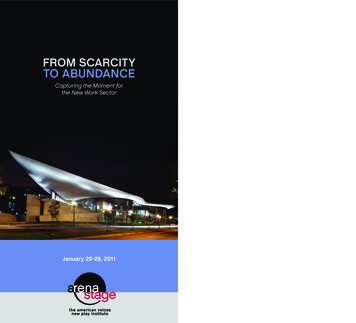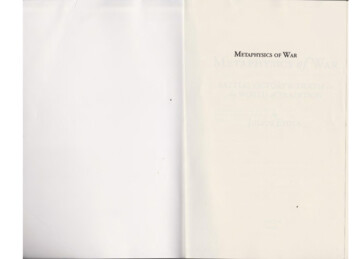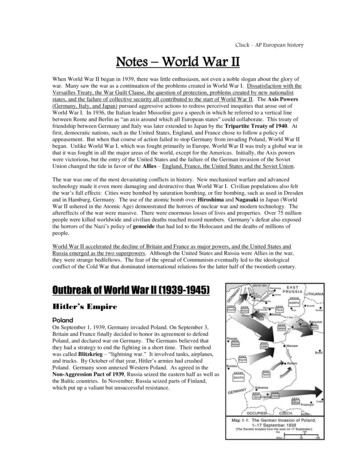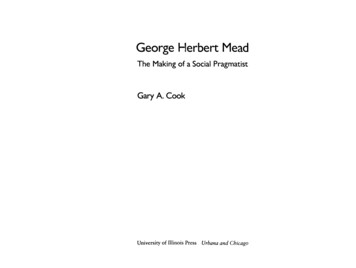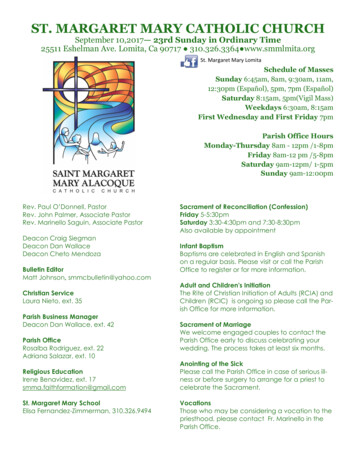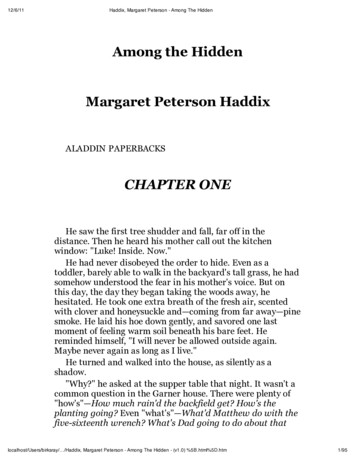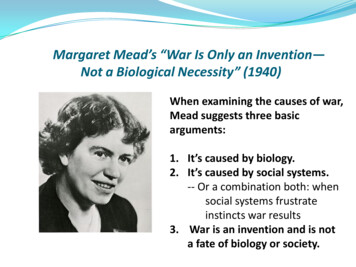
Transcription
Margaret Mead’s “War Is Only an Invention—Not a Biological Necessity” (1940)When examining the causes of war,Mead suggests three basicarguments:1. It’s caused by biology.2. It’s caused by social systems.-- Or a combination both: whensocial systems frustrateinstincts war results3. War is an invention and is nota fate of biology or society.
Mead was ananthropologist whostudied various primitivecultures around theworld. She was especiallyinterested in cultures thatappeared to have nowarfare or history of it.
People without War? Mead claims the Eskimo are an example of people without war. She also mentions the Lechas of Sikkim Mead says the Eskimo fight and kill, but this occurs amongindividuals against one another: “The idea of warfare, of one grouporganizing against another group was absent” (Course Reader [CR] 14). She addresses a counterargument—idea #2 (state structurespromote war): “isn’t this because the Eskimo have such a low andundeveloped form of social organization?” (CR 14). She adds, “Doesn’t the absence of war among the Eskimo, whiledisproving the biological necessity of war, just go to confirm thepoint that it is the state of the development of society whichaccounts for war, and nothing else?” (CR 14).
To answer, Mead shifts gears and turns to other examples: She says the Andamans had virtually no social structures (classheirarchies), but they knew war. She says something similar about Australian aborigines. If primitive nomadic people like these aborigines fight wars,she thinks it teaches a lot about what causes war since warcan occur without these things she mentions:“The student of social evolution will seek in vain for hisobvious causes of war, struggle for lands, struggle for power ofone group over another, expansion of population, need todivert the minds of a populace restive under tyranny, or eventhe ambition of a successful leader to enhance his own prestige.All are absent, but warfare as a practice remained ” (CR 14)
Thus, Mead thinks biology can’t account for war if some peopledon’t have war (Eskimos), and a developed social structure(permanent dwellings, class stratification, etc.) can’t accountfor war if some people without it do have war. As she sees it, war is an invention. Cultures have differentinventions (or customs) for conflict resolution, and war is oneof them. She mentions various examples of conflict resolution: DuelsVendettasThe Balinese way of “registering quarrels with the gods”The jury system She suggests that individuals don’t just pick any of these—theypick an option their culture has invented (and encouraged)
For Mead, war can’t exist without inventing it, but onceit’s been invented various cultures have various reasonsfor its ongoing existence. These are ones she mentions:“glory. . . . prestige in the eyes of his own sex or of theopposite sex. . . . [and] manliness” (CR 15) Mead says humans rarely give up inventions (unless abetter one comes along), and she suggests it’s hard tothink outside the box once customs take hold:“Warfare is here, as part of our thought; the deeds ofwarriors are immortalized in the words of our poets; thetoys of our children are modeled upon the weapons of thesoldier; the frame of reference within which our statesmenand diplomats work always contains war.” (CR 15)
Mead offers hope with an example of a relatively newinvention (a new custom) in the history of man: Trial by Jury Instead of torturing the accused (like witches), we now have trials. Mead says for new inventions to be made, two things arenecessary:1. Attention to flaws of old inventions (example: media against war)2. The belief that a better invention is possible
Thus, Mead thinks biology can't account for war if some people don't have war (Eskimos), and a developed social structure (permanent dwellings, class stratification, etc.) can't account for war if some people without it do have war. As she sees it, war is an invention. Cultures have different
